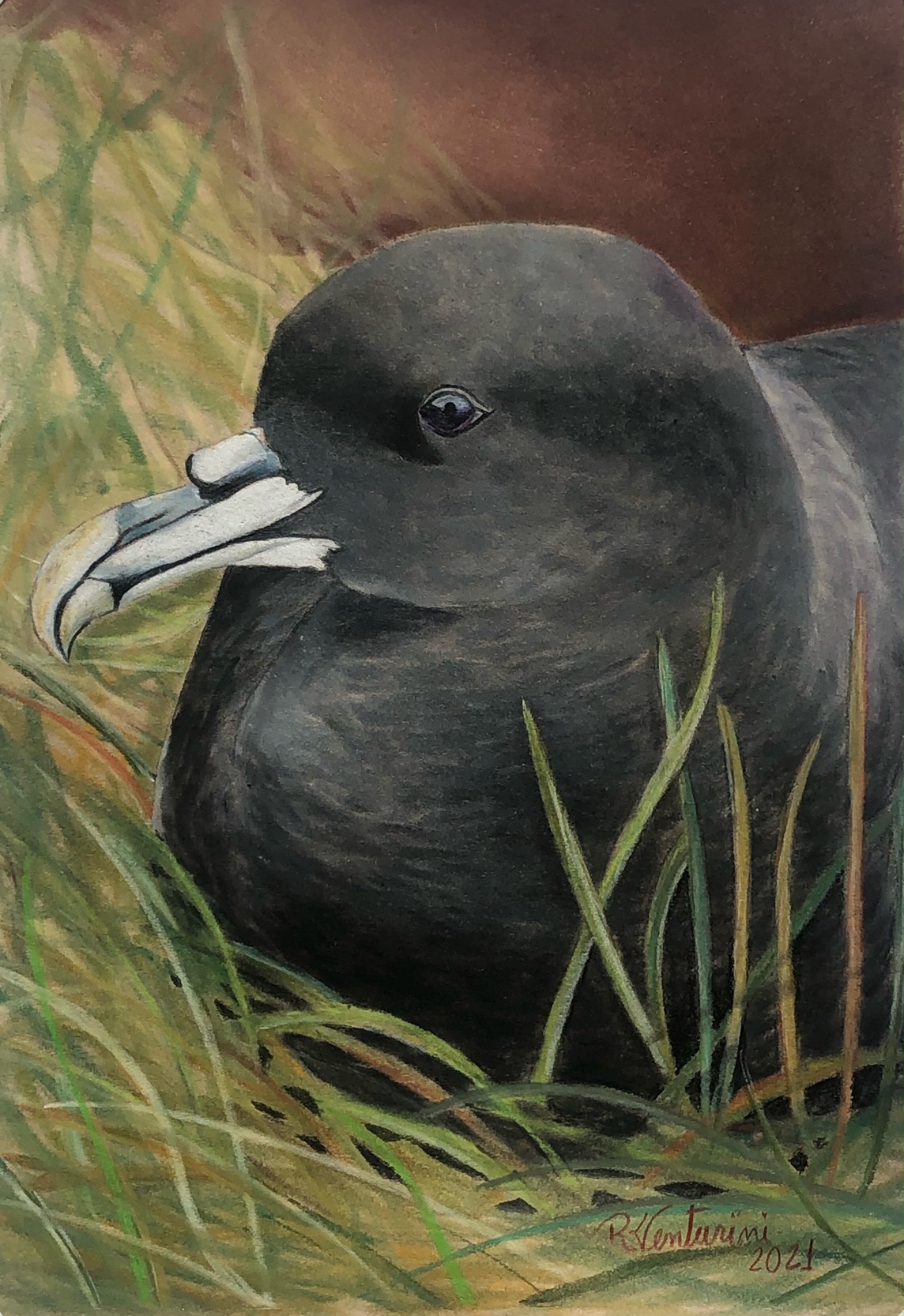
White-chinned Petrel in PanPastels by ABUN artist Rosana Venturini for ACAP; photograph by Andy Wood
Carlos Linares (Department of Biological Sciences, Boise State University, Idaho, USA) and colleagues have published in the journal Emu - Austral Ornithology on using acoustic recorders to assess population densities of Vulnerable White-chinned Petrels Procellaria aequinoctialis in a breeding colony.
The paper’s abstract follows:
“Monitoring of population sizes and trends using conventional surveys is challenging for nocturnal, burrow-nesting seabirds. The White-chinned Petrel is the most commonly killed species in Southern Ocean fisheries and its breeding success at many sites is reduced because of predation by invasive cats and rodents. As adaptive management of such threats requires cost-effective and reproducible protocols for monitoring populations, we examined the potential of automated bioacoustic techniques for measuring colony attendance patterns (relative number of birds visiting at a given time) using data from acoustic recorders deployed over a breeding season at Bird Island, South Georgia. Generic recognition software was of limited utility, but a suite of acoustic indices in a random forest model reliably predicted the occurrence of vocalisations. Vocal activity showed clear temporal patterns, despite high day-to-day variability, and was lowest during the pre-laying period, in the early evening, and on moonlit nights. To facilitate estimation of population density using acoustic recorders, we determined the mean vocalisation rate of individuals (2.3 min−1), mean call length (~15.3 sec), and detection distance (~15 m based on signal to noise ratios of playbacks). Our results indicate that acoustic indices are a useful measure of colony attendance. If these indices can be linked to density, acoustic monitoring would provide a powerful and cost-effective census method for White-chinned Petrels and other nocturnal species.:
With thanks to Richard Phillips.
Reference:
Linares, C.G., Phillips, R.A. & Buxton, R.T. 2022. Monitoring vocal activity and temporal patterns in attendance of White-chinned Petrels using bioacoustics. Emu - Austral Ornithology DOI: 10.1080/01584197.2021.2018337.
John Cooper, ACAP Information Officer, 09 March 2022

 Español
Español  English
English  Français
Français